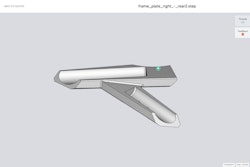Thanks to the continued growth in global manufacturing, the adoption of manufacturing execution systems (MES) shows no sign of slowing down. Valued at $7.86 billion in 2014, the global MES market is expected to expand 11.1 percent CAGR between 2015 and 2025, reaching $19.36 billion by 2023. As of July 2018, Software Connect has seen a 6.4 percent increase since 2017 in manufacturing companies requesting MES in their software projects. Considering 34 percent of manufacturers already use MES software or plan to implement it within the next three years, MES isn’t just a manufacturing execution system—it’s also manufacturing efficiency and savings.
A Brief History of MES
An MES helps manufacturing operations handle all production operations, including manufacturing indicators, quality, traceability, and planning. The information system helps connect, monitor, and control complex manufacturing systems. Although the idea of MES originated decades ago, global manufacturing has increased the need for unified manufacturing solutions. Technological advances such as AI, cloud computing, and IoT devices have also introduced greater levels of automation and intelligence. This has allowed plants to adopt an MES that’s both affordable and efficient.
The origins of the MES date back to the 1970s, when manufacturers began adopting software to help automate simple accounting tasks. Tools such as basic inventory management eventually found their way into the workflow, but overall software solutions still lacked the depth needed to assist full manufacturing endeavors until the introduction of Manufacturing Resource Planning (MRP/MRPII) systems to manage the material planning, material control, and production definition.
Why Companies Adopt MES Software
Today, a plant’s equipment and operations integrate MES software to manage production planning, job release and resource optimization, production workflow, and quality. From the back office to the plant floor, MES software can help achieve several goals: maximizing throughput and resource utilization, decreasing the manufacturing cycle, reducing the amount of scrap and rework, improving the ability to achieve quality targets, reducing inventory holding costs, and following regulatory compliance standards. An MES also makes life easier for plant employees: fewer last-minute scrambles to allocate resources or meet unexpected demand means workers are more satisfied and less stressed.
Manufacturers are also choosing to adopt MES software thanks to its scalability and affordability. With solutions capable of accommodating small, medium, and large-scale manufacturing operations, the efficiency and control MES software has to offer is driving manufacturers to invest in platforms that allow them to keep up with the competition. It also helps coordinate information between different plants and factories to speed up decision making. Government regulations in the manufacturing sector are also driving the need for safe, automated solutions in industries like pharmaceuticals, pushing manufacturers to employ MES to help coordinate automated tasks. In developing nations like China, India, and Brazil, MES is also enabling new manufacturing companies to completely bypass paper-based manufacturing operation systems in the first place.
What Lies Ahead For MES
One of the biggest barriers to the adoption of an MES has been the initial investment cost and complexity of the installation. But thanks to the growth of industry-specific out-of-the-box implementations, manufacturers are having an easier time finding MES software that doesn’t require expensive custom extensions. There are MES options that are custom-made for CPG, food and beverage, and private label manufacturers. In the medical space, solutions have been built to assist pharmaceutical manufacturers. Some companies even offer ready-to-go manufacturing capabilities for multiple industries, like configurations built for automotive, energy, medical, metals, plastics, and rubber. Manufacturers are often better off taking the extra time to find an out-of-the-box MES that meets their specific needs than spending time and money on unnecessary customization.
As new plants continue to emerge throughout the world and aging buildings or equipment require replacement, it’s clear that MES has a bright future. In fifty years, manufacturing has moved from basic accounting and inventory management tools to an entire plant’s operations connected through real-time tracking and analytics. While there’s no way of knowing exactly what the future holds over the next fifty years, it’s safe to say that between developments in AI, machine learning, and IoT sensors, that MES software will continue to play an important role.
David Budiac is a Managing Partner at Software Connect.






















